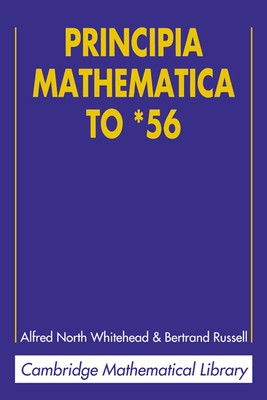
- We will send in 10–14 business days.
- Author: Alfred North Whitehead
- Publisher: Cambridge University Press
- ISBN-10: 0521626064
- ISBN-13: 9780521626064
- Format: 15 x 23.2 x 2.9 cm, minkšti viršeliai
- Language: English
- SAVE -10% with code: EXTRA
Reviews
Description
The great three-volume Principia Mathematica (CUP 1927) is deservedly the most famous work ever written on the foundations of mathematics. Its aim is to deduce all the fundamental propositions of logic and mathematics from a small number of logical premises and primitive ideas, establishing that mathematics is a development of logic. This abridged text of Volume I contains the material that is most relevant to an introductory study of logic and the philosophy of mathematics (more advanced students will of course wish to refer to the complete edition). It contains the whole of the preliminary sections (which present the authors' justification of the philosophical standpoint adopted at the outset of their work); the whole of Part I (in which the logical properties of propositions, propositional functions, classes and relations are established); section A of Part II (dealing with unit classes and couples); and Appendices A and C (which give further developments of the argument on the theory of deduction and truth functions).
EXTRA 10 % discount with code: EXTRA
The promotion ends in 22d.11:04:05
The discount code is valid when purchasing from 10 €. Discounts do not stack.
- Author: Alfred North Whitehead
- Publisher: Cambridge University Press
- ISBN-10: 0521626064
- ISBN-13: 9780521626064
- Format: 15 x 23.2 x 2.9 cm, minkšti viršeliai
- Language: English English
The great three-volume Principia Mathematica (CUP 1927) is deservedly the most famous work ever written on the foundations of mathematics. Its aim is to deduce all the fundamental propositions of logic and mathematics from a small number of logical premises and primitive ideas, establishing that mathematics is a development of logic. This abridged text of Volume I contains the material that is most relevant to an introductory study of logic and the philosophy of mathematics (more advanced students will of course wish to refer to the complete edition). It contains the whole of the preliminary sections (which present the authors' justification of the philosophical standpoint adopted at the outset of their work); the whole of Part I (in which the logical properties of propositions, propositional functions, classes and relations are established); section A of Part II (dealing with unit classes and couples); and Appendices A and C (which give further developments of the argument on the theory of deduction and truth functions).


Reviews